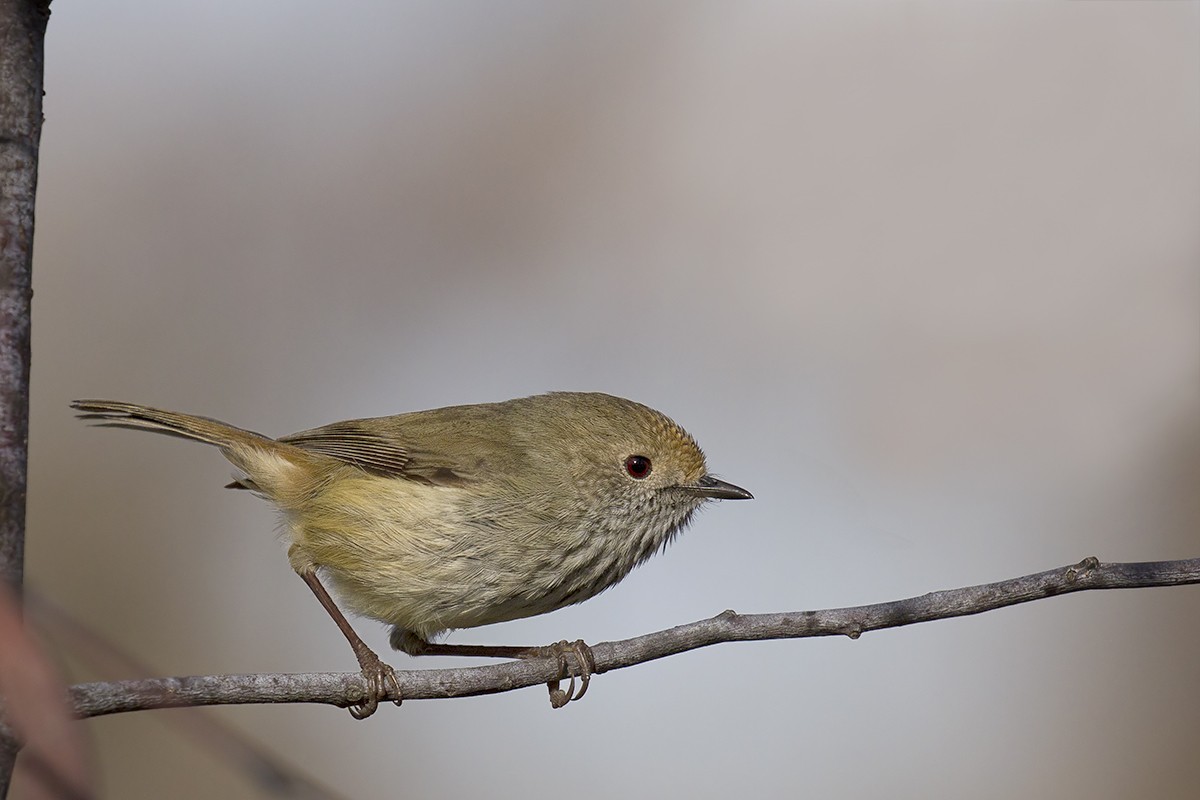Brown Thornbill
A species of Thornbill Scientific name : Acanthiza pusilla Genus : Thornbill
Brown Thornbill, A species of Thornbill
Botanical name: Acanthiza pusilla
Genus: Thornbill
Content
Description People often ask General Info
Description
The brown thornbill is warm brown to olive-brown above, with flanks of olive-buff to yellowish white. It has buff scallops on the forehead and large dark red eyes. There are blackish streaks on a grey throat and breast, a tawny rump and tail base, and a black subterminal band with paler tips on the tail. The brown thornbill ranges in size from 9 to 10 cm (3.5 to 3.9 in), making it relatively small. It typically weighs 7 g (0.25 oz). 
Size
12 cm
Colors
Brown
Black
Bronze
Gray
White
Life Expectancy
17.6 years
Nest Placement
Shrub
Feeding Habits
Brown Thornbill primarily consumes insects such as spiders, beetles, and ants; occasionally eats seeds, fruits, or nectar. This species forages near ground level, often in groups, and may join mixed-species flocks, notably avoiding solitary feeding during breeding.
Habitat
The brown Thornbill primarily resides in thick shrubby undergrowth, occupying habitats from wet and dry sclerophyll forests to heathlands, and at elevations up to 1200 meters. These birds favor dense riparian vegetation, eucalypt woodlands, and may frequent coastal scrub outside the breeding season. They can occasionally adapt to rural and urban green spaces with adequate shrubbery.
Dite type
Insectivorous
People often ask
General Info
Feeding Habits
Bird food type
Distribution Area
The brown thornbill can be found in the eastern and southeastern parts of Australia, including Tasmania. It is usually found within 300 kilometres (190 mi) of the coast. It shares a substantial part of its range with the inland thornbill on the western slopes of the Great Dividing Range and the Mt Lofty Ranges. It is also common in the Blue Mountains. The subspecies A. p. pusilla and A. p. diemenensis have been observed near the Australian Capital Territory and on Tasmania, respectively. Brown thornbills live at elevations up to 1,200 m (3,900 ft). They are found in dry forests with dense undergrowth, rainforests, shrublands, coastal dune thickets, and in rushes and bracken along rivers and creeks. They are sedentary and common, except in the drier parts of their range. 
Species Status
The brown thornbill is widespread with a stable population and classified as least concern on the IUCN Red List. The King Island brown thornbill (A. p. archibaldi) is considered to be critically endangered and most likely to go extinct, with very few sightings for many decades. However, recent surveys indicate that there may be between 20 and 50 individuals of the subspecies living on the island and consequently a recovery program was expected to be formulated in late 2019. 
Scientific Classification
Phylum
Chordates Class
Birds Order
Perching birds Family
Australasian warblers Genus
Thornbill Species
Brown Thornbill 